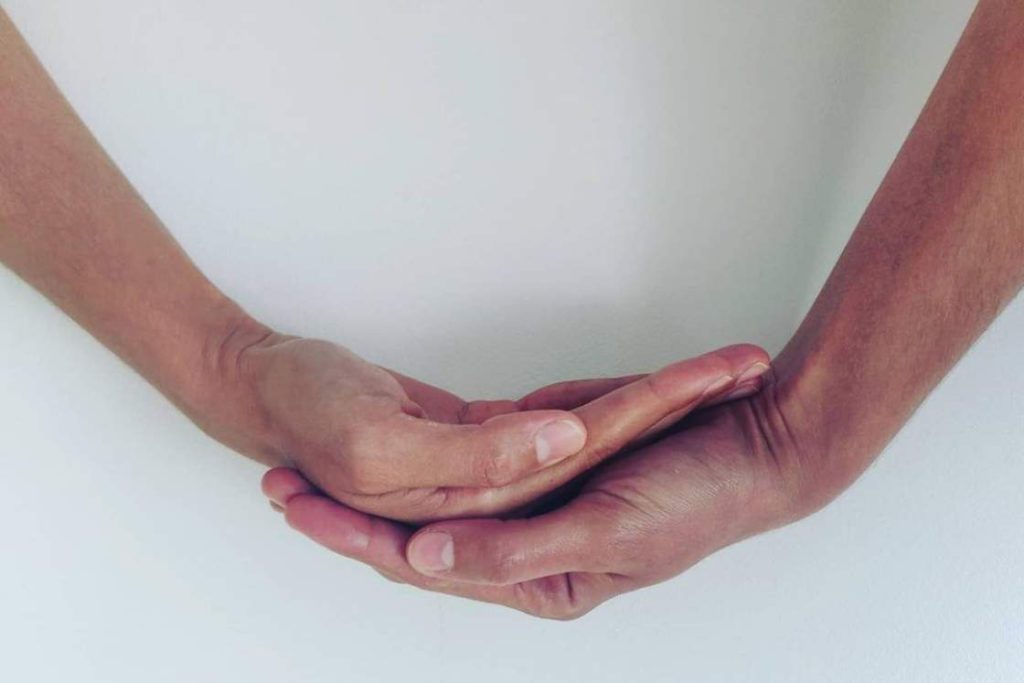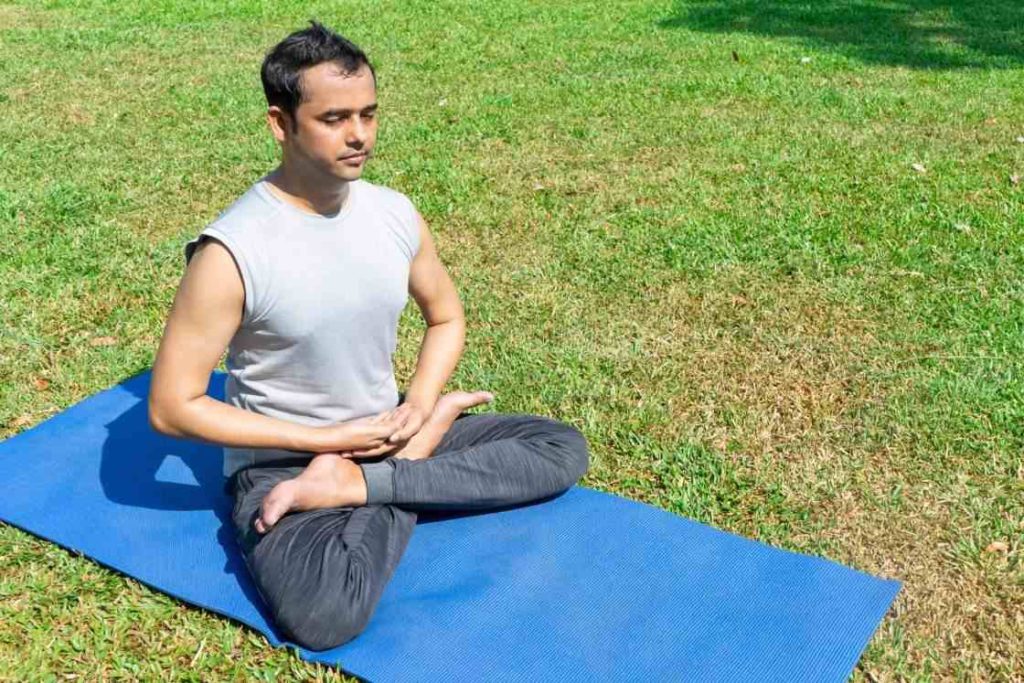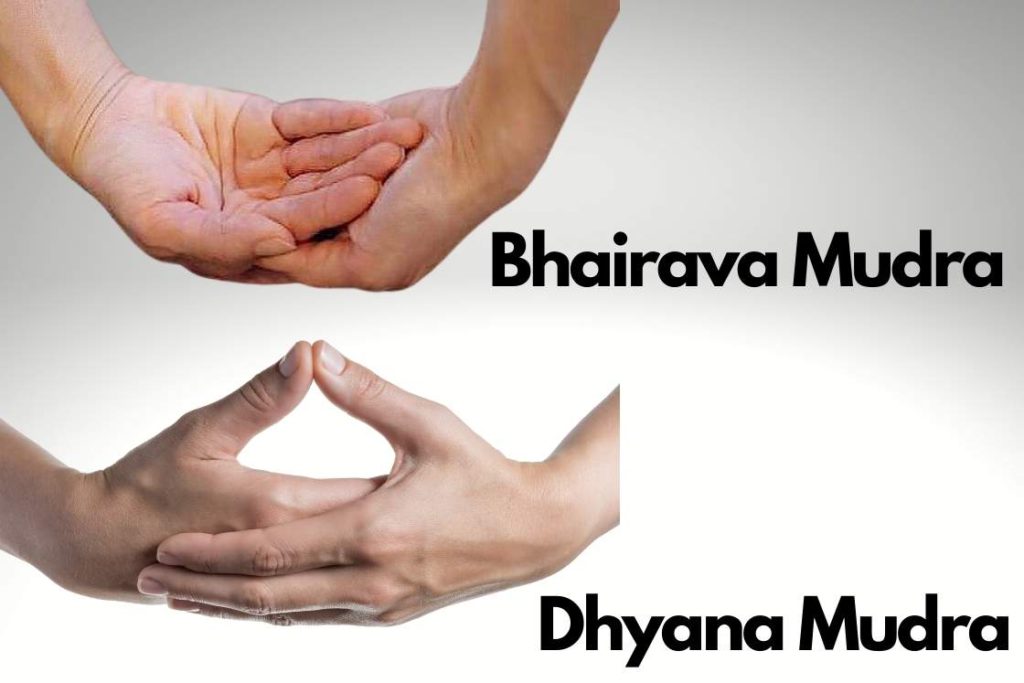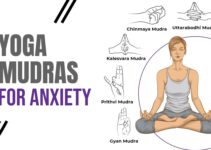
The name “Bhairava” refers to a fierce aspect of Lord Shiva, a deity renowned for his transformative power and the destruction of ignorance. Bhairava Mudra is described in Tantric texts as a powerful hand gesture used in yoga and meditation to build inner strength and balance. It harmonises opposing forces within, supports deeper meditation and personal growth, and blends masculine and feminine energies.
This mudra promotes inner peace and alignment, making it a simple yet effective practice for enhancing meditation and overall well-being.
Meaning
In Sanskrit, “Bhairava” means “fearsome” or “terrible,” and “mudra” means “gesture.” Bhairava Mudra is a hand position that combines two opposing forces, like active and calming energies. The right hand represents the sun’s strong and energetic qualities, while the left hand represents the moon’s peaceful and intuitive qualities.
This gesture helps balance these forces, creating a sense of unity and inner peace. Practicing Bhairava Mudra improves meditation and helps develop inner strength and power, similar to Shiva’s. It’s also known as Shiva Mudra, Bhairava Pranayama, or Bhairava Mudra Meditation.
How to do Bhairava Mudra (steps)

- Sit in a comfortable meditative posture, such as Padmasana or Sukhasana.
- Keep your head and spine erect.
- Close your eyes and take a few deep, focused breaths.
- Place your hands on your thighs with palms facing upwards.
- Place your hands on your thighs with palms facing upwards.
- Place your right hand over your left palm, with the fingers pointing in opposite directions.
- Meditate in this position for 15-45 minutes.
- To end, open your eyes and move your hands back to your thighs or knees.
- Relax and breathe freely.
Additional tips
- You can practice Bhairava Mudra while sitting on a chair or cot.
- It’s okay to keep your eyes open, but closed eyes are preferred for better focus.
- Practicing Bhairava Mudra in Siddhasana helps awaken Kundalini energy, as this posture allows prana energy to flow into the spinal column (Sushmana) and supports maintaining celibacy.
Time & duration
- Ideal Time: Early morning is the best time to practice Bhairava Mudra.
- Duration: Practice for 35-45 minutes continuously, or for 15 minutes three times a day.
Note: Perform the mudra on an empty stomach or at least one hour after eating.
Precautions
- Ensure a relaxed and comfortable posture to avoid discomfort or strain.
- Focus on your breath and breathe slowly and deeply while holding the mudra.
- Avoid practicing immediately after eating.
- Do not overexert yourself; listen to your body and take breaks if needed.
- If you experience pain or discomfort, release the mudra and consult a yoga teacher or medical professional.
Contradictions
- Bhairavi Mudra may disrupt hormonal balance in men. To maintain energy balance, practice Bhairava and Bhairavi mudras in alternating sequences.
- Yoga instructors should not let students hold Bhairava Mudra for too long to prevent excessive intensity.
- The goal of the practice is to balance Shiva and Shakti, and the energy released should be used wisely. Instructors need to be skilled in guiding this.
- Practicing Bhairava Mudra for longer periods can help balance the body and mind, improve meditation, and ease anxiety and mood swings.
Bhairavi Mudra: The feminine counterpart to bhairava
In Hindu mythology, Bhairavi is the female counterpart of Bhairava and is also known as Shakti, the divine feminine. Like Bhairava, Bhairavi mudra shares a similar purpose but with a key difference in hand placement.
In Bhairavi Mudra, the left hand is placed over the right, with both palms facing up and fingers pointing in opposite directions. This variation activates consciousness and manifestation, and is particularly recommended for women.
Note: The hands represent Ida and Pingala Nadis, which are channels of masculine and feminine energy. Practicing only Bhairavi mudra may affect hormonal balance in men. Therefore, Bhairava and Bhairavi mudras should be practiced in alternating sequences to balance the male and female energies associated with both.
Combining both mudras represents the union of the individual with supreme consciousness, highlighting their yogic significance
Bhairava Mudra and Dhyana Mudra

Another mudra that closely resembles Bhairava Mudra is Dhyana Mudra. It is also a meditative hand gesture, achieved by placing the right hand on the left palm. However, in Dhyana Mudra, the tips of both thumbs are joined to form a triangle between the hands and thumbs.
While Bhairava Mudra has roots in Hindu mythology, Dhyana Mudra is associated with Buddhism. The three corners of the triangle represent the three jewels of Buddhism: Buddha, Sangha (community), and Dharma (teachings).
Both mudras assist practitioners in reaching higher meditative states, with the main difference being the thumb position.
Bhairava Mudra Benefits
- Bhairava Mudra balances the left and right hemispheres of the brain.
- It alleviates opposing forces in the mind and body.
- It provides soothing and immediate relief from anxiety, stress, and mood swings.
- This mudra fosters calm, peace, and inner stillness, promoting a sense of wholeness.
- Practicing Bhairavi Mudra helps preserve the secretion of Bindu (nectar) at the top of the head, which aids in kundalini awakening.
- Bhairavi Mudra helps retain and move seminal energy upwards, benefiting both celibates and those seeking remedies for premature ejaculation.
- It supports the formation of ‘Ojas’ shakti in the brain, leading to the state of Urdhvareta.
- Bhairava Mudra stimulates and activates the five elements (Pancha Tattva), chakras, prana, and doshas, keeping the body disease-free.
- It instills unity and wisdom within the practitioner.
- It balances Prana Vata and Apana Vata, maintaining equilibrium in the Prana-Apana axis.
- Connects the hands to merge ‘SO’ and ‘HAM’ energies (Ida and Pingala Nadis), aligning individual and supreme consciousness, and opening the Sushmana Nadi, enhancing meditation, inner balance, and mental stability.
Conclusion
The best thing about Bhairava Mudra is its remarkable and immediate impact. Practitioners can notice health benefits and a boost in courage right after their first session.
Bhairava Mudra is one of the simplest practices to enhance overall body function, promoting a disease-free and vigorous lifestyle.





Pl guide whether Bhairavi mudra must be practised by men after practising Bhairava mudra.
Since it will lead to a state of Urdhvareta, how long does a household can practice it safely for meditation. Because it creates more peace in mind than other mudra.